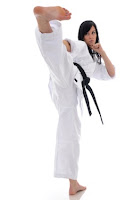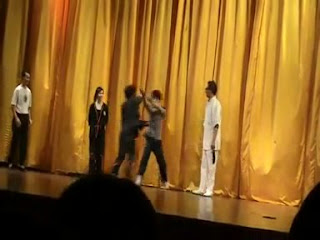Extract #2 from "Essential Jo"

Here is the second extract from my forthcoming book "Essential Jo". Informal grip As with golf, tennis, or any other activity which requires using a stick-like object, your grip is one of the most important features. The “informal grip” is one you adopt when you are not actively engaged in training. We use the traditional method also seen in other Japanese and Chinese weapons arts: the weapon is held palm down and behind your shoulder. This is not only subtle and non-confrontational; it also provides an element of concealment and surprise, should you need it against would-be assailants. Surprisingly, the hold is also quite effective in allowing a “quick draw” for defence. The key to this “quick draw” is to hold the jo slighly off-centre, palm closer to the end facing downwards. I’ve found that the ideal point is approximately one palm width from the centre (or slightly less than that). What this means is that when you drop the jo naturally it slopes upwards at a gradual i...





.jpg)